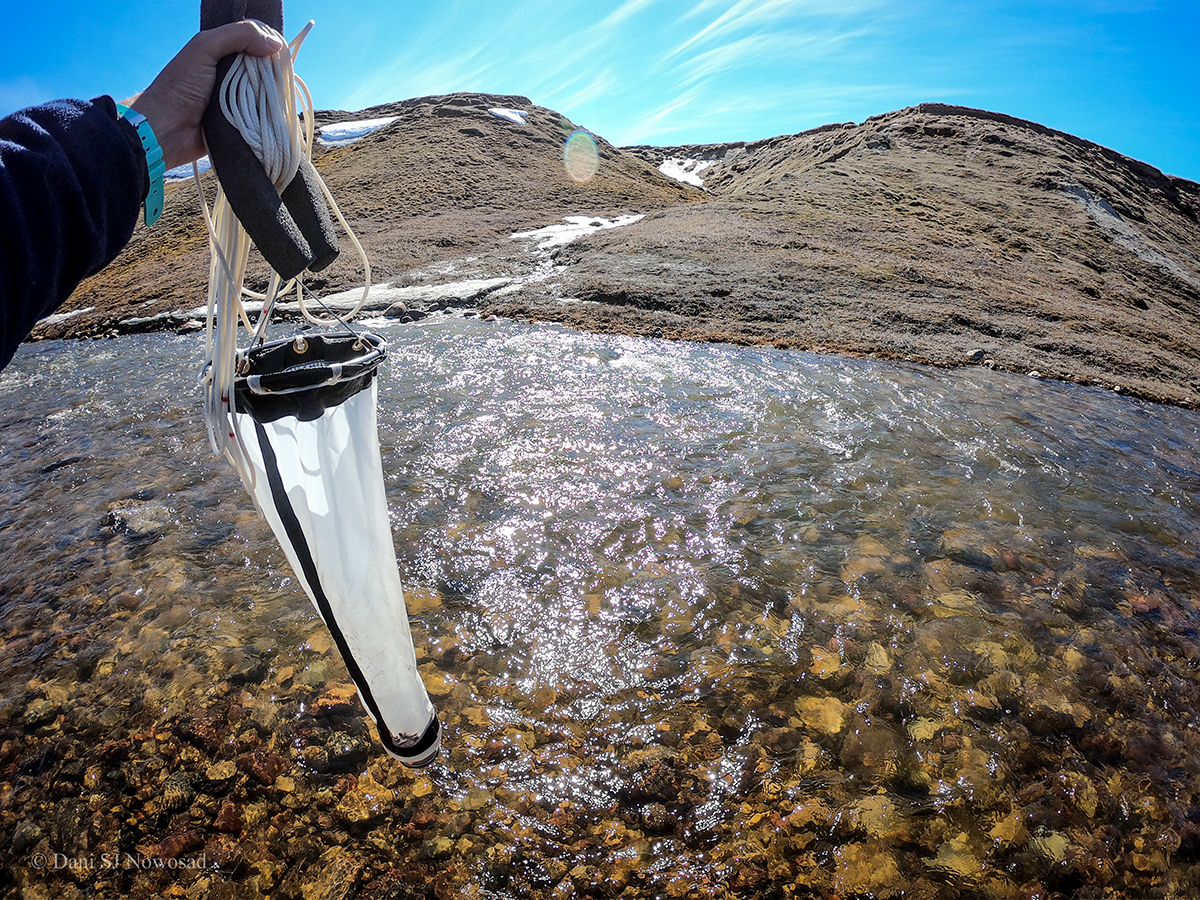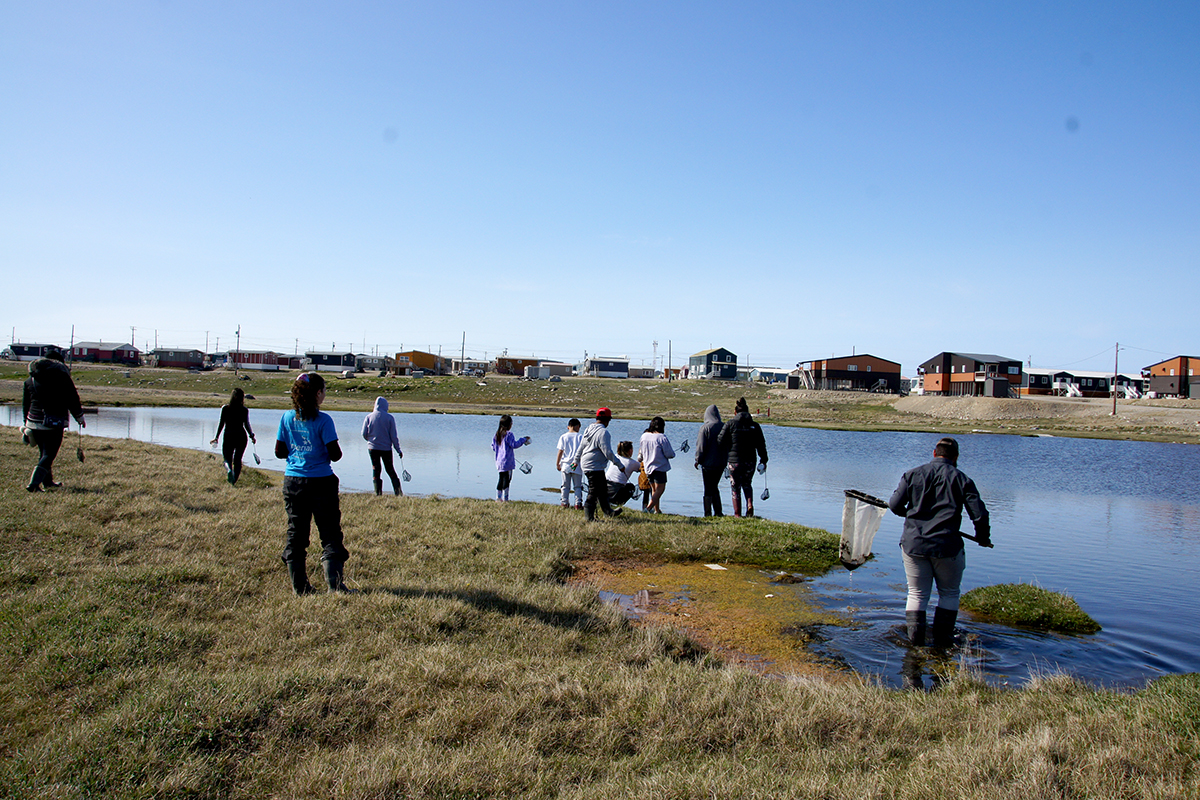Using DNA to track invasive species in the Arctic
By Danielle Nowosad
In Gjoa Haven, Nunavut, older people say that that when they were children, there were no biting black flies—unlike today.
As the Arctic continues to warm due to climate change, invasive plants and animals may move northward. To spot these new arrivals, we need to know what species are living in the Arctic now. For some Arctic environments, we don't yet have that important baseline information.
For example, we don't know how many kinds of freshwater invertebrates—snails, insects, worms, and other small creatures— live in the ponds, lakes, and rivers around Iqaluktuttiaq/Cambridge Bay, Nunavut. To find out, we're using DNA barcoding, a new technique that identifies an animal's species quickly and accurately using its genes. So far, over three field seasons, we have collected a lot of information: 6,000 records and 4,500 DNA sequences from about 140 field sites.
Working with experts from the community and responding to their questions is an important part of how we do our research. Until this year we focussed on collecting samples from as many new sites as possible, but based on feedback from the Ekaluktutiak Hunters and Trappers Organization (EHTO), we will be re-sampling some of the water bodies from previous years. This will allow us to compare how the kinds of invertebrates change over a summer, and from one year to the next. This data will help address questions from the EHTO about differences between wet years and dry years.

Net used to collect zooplankton samples in a creek near Augustus Hills, about 20 km west of Iqaluktuttiaq/Cambridge Bay, Nunavut.
Photo: Danielle Nowosad
So far our data includes about 357 groups of species. The most diverse is non-biting midges, with 222 species groupings. These insects use freshwater to reproduce and grow in their juvenile stages. There are nine species groupings of black flies, and three of mosquitoes.
The DNA dataset has many uses, including tracking where the organisms we find around Cambridge Bay come from, and monitoring for invasive pest insects like those biting black flies in Gjoa Haven, only 400 km from Iqaluktuuttiaq/Cambridge Bay. In sufficient numbers, invasive insect pests would have the potential to kill large mammals like caribou and musk oxen.
Although we now have an enormous amount of data, we need more in order to understand all the biodiversity in the freshwater systems around Cambridge Bay. When we collect our samples over the 2022 field season we'll be continuing to build the crucial baseline information that will enable us to spot invasive species in future.
To share the exciting world of pond invertebrates in ponds with local youth, I partnered up with the Kitikmeot Friendship Society, to add a science workshop to their program of activities.
With support from my colleagues at Polar Knowledge Canada, we delivered two workshops where we collected invertebrates from a pond near the Canadian High Arctic Research Station (CHARS). Then we went inside to look at what we had found under the microscope. I provided identification sheets courtesy of the Centre for Biodiversity Genomics, and customized colouring sheets depicting local critters and habitats (created by artist Shelby Bohn).

Young participants get to know some of the many kinds of life in an arctic pond during the "What's in the water?" freshwater biodiversity workshop in July 2022.
Photo: Danielle Nowosad
Danielle Nowosad is a PhD student at the University of Guelph and a research assistant at Polar Knowledge Canada. She recently gave a public presentation in Iqaluktuuttiaq/Cambridge Bay about her work on freshwater invertebrates.
Polar Knowledge Canada
For media inquiries, contact:
communications@polar-polaire.gc.ca